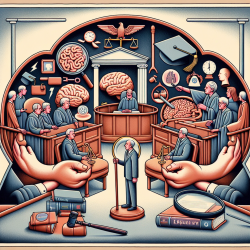Introduction
As a speech-language pathologist, understanding the nuances of Attention Problems in children is crucial for delivering effective interventions. The research article "Trajectories of CBCL Attention Problems in Childhood" provides valuable insights into the developmental trajectories of Attention Problems, which can significantly enhance our practice. By leveraging data-driven insights, we can better tailor our approaches to meet the unique needs of each child, ultimately fostering improved outcomes.
Understanding the Research
The study analyzed developmental trajectories of Attention Problems in children aged 6 to 12 years using the Child Behavior Checklist (CBCL). The research identified three distinct trajectories:
- Stable Low: The majority of children (62-71%) exhibited consistently low levels of Attention Problems throughout the study period.
- Low-Increasing: A smaller group (15-18%) showed an increase in Attention Problems over time.
- High-Decreasing: Some children (14-21%) started with high levels of Attention Problems, which decreased as they aged.
Interestingly, these trajectories were consistent across both twins and singletons, suggesting that genetic and environmental factors influencing Attention Problems are similar in both groups.
Implications for Practitioners
Understanding these trajectories can significantly impact how practitioners approach treatment and intervention for Attention Problems. Here are some key takeaways:
- Early Identification: Recognizing the trajectory a child is on can help in early identification and intervention, particularly for those in the low-increasing and high-decreasing groups.
- Tailored Interventions: Interventions can be customized based on the child's trajectory. For example, children in the low-increasing group may benefit from proactive strategies to prevent escalation, while those in the high-decreasing group might need support to maintain their progress.
- Monitoring Progress: Regular assessments can help track a child's trajectory, allowing for timely adjustments to intervention strategies.
Encouraging Further Research
While this study provides valuable insights, it also highlights the need for further research to explore the underlying factors contributing to these trajectories. Understanding the genetic, environmental, and social influences can lead to more effective interventions and better outcomes for children.
Conclusion
The research on Attention Problems trajectories offers a data-driven foundation for improving our practice as speech-language pathologists. By integrating these insights into our work, we can better support children in overcoming Attention Problems and achieving their full potential.
To read the original research paper, please follow this link: Trajectories of CBCL Attention Problems in childhood.










